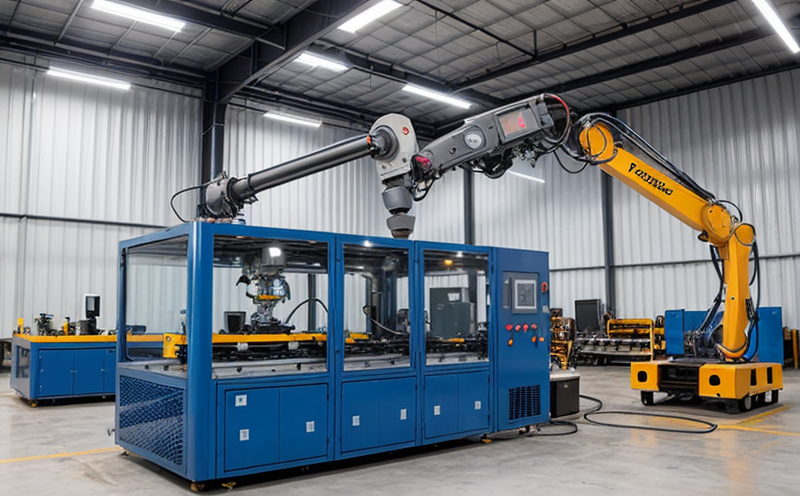ASTM F3282 Robot Sensor Accuracy Testing
The ASTM F3282 standard provides a comprehensive framework for testing and evaluating robot sensor accuracy. This service is essential for ensuring that robotic systems in industrial manufacturing environments function as expected, thereby enhancing operational efficiency and safety.
Robot sensors play a critical role in guiding the movement of robots and enabling them to interact with their environment accurately. The ASTM F3282 test assesses how well these sensors can detect changes in position, velocity, force, torque, or other parameters that are vital for robotic performance. By adhering to this standard, manufacturers ensure their systems meet stringent accuracy specifications.
The testing process involves subjecting the robot sensor to various stress conditions and measuring its responses against known values. This approach helps identify any discrepancies between actual measurements and expected outputs, allowing for necessary adjustments before deployment into production environments.
Compliance with ASTM F3282 is particularly important in industries like automotive, aerospace, electronics manufacturing, and logistics where precision and reliability are paramount. Non-compliant systems could lead to costly downtime, increased maintenance costs, and potential safety hazards. Therefore, regular testing using this standard ensures continuous quality assurance throughout the lifecycle of robotic equipment.
Our laboratory utilizes state-of-the-art facilities equipped with advanced instrumentation capable of conducting ASTM F3282 compliant tests efficiently and accurately. Our experienced team of engineers will guide you through every step of the process from initial consultation to final report delivery.
For more information on how our ASTM F3282 robot sensor accuracy testing services can benefit your organization, please contact us today.
Why It Matters
Incorporating ASTM F3282 into your quality assurance protocols is crucial for several reasons:
- Promotes Safety: Ensuring accurate sensor readings minimizes the risk of accidents involving robotic systems.
- Enhances Efficiency: Precise sensors contribute to smoother operations reducing errors and waste in manufacturing processes.
- Improves Reputation: Demonstrating adherence to recognized standards enhances credibility among clients and stakeholders.
- Achieves Compliance: Many industries have regulations mandating compliance with certain standards. Meeting these requirements can avoid legal penalties.
The importance of this testing cannot be overstated, especially given the increasing reliance on automation across various sectors.
Benefits
Implementing ASTM F3282 robot sensor accuracy testing offers numerous advantages:
- Precise Measurements: Ensures accurate data collection which is fundamental for reliable robotic operations.
- Enhanced Reliability: By identifying and rectifying inaccuracies early, system failures are reduced leading to better overall performance.
- Faster Troubleshooting: Quick identification of problematic areas helps in faster resolution times improving maintenance schedules.
- Better Decision Making: Accurate sensor data provides valuable insights aiding strategic planning and resource allocation within organizations.
These benefits collectively contribute to higher productivity levels, lower operational costs, and improved competitiveness for businesses utilizing robotic technologies.
Use Cases and Application Examples
| Use Case | Description | Data Collected |
|---|---|---|
| Automotive Assembly Line Optimization | Testing sensors used in robotic arms that place components onto vehicles. | Positional accuracy, repeatability, and cycle time measurements. |
| Aerospace Parts Handling | Evaluating sensor performance during the loading and unloading of delicate parts into assembly fixtures. | Force, torque, and position tolerance checks. |
In another example:
| Use Case | Description | Data Collected |
|---|---|---|
| Electronics Manufacturing Precision Placement | Assessing sensor accuracy in robotic devices used for placing microchips onto circuit boards. | Positional precision and alignment angle verification. |
| Logistics Warehouse Picking Robots | Evaluating sensors aiding autonomous robots in picking goods from shelves accurately. | Picking success rate, shelf identification accuracy, and weight sensing reliability. |
These examples illustrate just a few of the many applications where ASTM F3282 testing is relevant. Each use case underscores the necessity for precise sensor performance to meet industry demands effectively.





